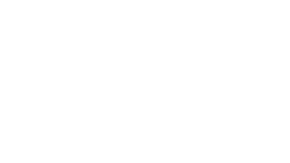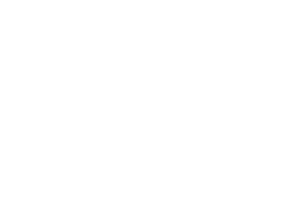 |
 |
 |

|
Bandra Ohm is the name of a new building by the architectural office James Law Cybertecture International. It is probably fair to describe the design and lifestyle as a spectacular view of the capital, Mumbai, and as a view where you hover a hundred metres above the world in your own swimming pool. (Photo: courtesy of James Law Cybertecture International)
|
|
 |
GLASSTEC 2016: ARTICLE NO. 5
-INTERACTIVE GLASS MELDS TOGETHER IT AND ARCHITECTURE
Touchscreen displays, LED technology and ultra-thin glasses: The multifunctional diversity of glass in IT and architecture will, in the long term, lead to a combination of both. Buildings, residential houses and public roads will turn into information media and control elements. Buildings will carry information on their façades about the things that take place inside. Road surfaces will automatically respond to and indicate hazards, displaying appropriate signs or notes as well as providing households with electricity. Moreover, where the relevant properties are known, it will be possible to produce glass in thicknesses of 10 microns. Some of the most exciting examples can be found here and at glasstec 2016 in Düsseldorf, the world’s leading trade fair for the glass industry.
|

|
Posted 6 April 2016
|
Share this:
|
|
Interactivity (Latin: inter (“between”) and agere (“to drive, operate”). According to Wikipedia, interactivity concerns “interaction with computers and other machines with a user interface”. This implies the exchange of information.
|
|
|
|
|
|
|
Interactive building envelopes
Glass façades that turn into projection screens, delivering interesting information both to the residents inside and passers-by in the street, are no longer visions of the future, but they are technically feasible today. Architects of prestigious buildings no longer see a façade as a design element which conceals something. Rather, they include it the façade in their modelling, giving it an interactive function. In doing so, they let themselves be guided not only by energy efficiency and sustainability, but also by the benefit of glass as part of an IT system. James Law, an architect from Hong Kong, calls this new type of architecture “Cybertecture”. One of his projects which is currently under construction is Parinee I in Mumbai, India – an office centre which, in the future, will primarily be used by creative minds in the Indian film industry. Thanks to LED technology, the finished building will be an advertising medium of everything that is conceived within it. The façade engineering for this unique 160-metre tower block is being provided by the international engineering office Arup. The building has over 3,700 square metres of multimedia displays and LED screens as well as lighting functions. Moreover, areas can be combined to form bigger ones, or they can each display different content, independently of one another. Passers-by do not need invitations, but can share, for instance, in a première celebration that is held inside, enjoying real-time footage of celebrity guests displayed to them on the façade.
Needless to say, the transparent glass also lets the sun into the premises where it is centrally controlled, so that the incidence of light is automatically adjusted to the time of day, and energy consumption and CO2 emissions are kept low.

|

|

|

|

|
|
|
Bandra Ohm will be a residential tower block, shaped like the Greek letter omega, inspired by the movement of water drops and representing fluidity and the flow of water. The thematic focus will be prominently visible from the outside in the form of special balconies, designed as private swimming pools outside each apartment. Once it is finished, the building will be 140 meters high, with 30 floors and luxury features for a suitably solvent clientèle. (Photos: courtesy of James Law Cybertecture International)
|
|
|
|
|
Bandra Ohm is the name of a new building by the architectural office James Law Cybertecture International. It is probably fair to describe the design and lifestyle as a spectacular view of the capital, Mumbai, and as a view where you hover a hundred metres above the world in your own swimming pool. (Photo: courtesy of James Law Cybertecture International)
|
|
|
|
|
Bandra Ohm will be a residential tower block, shaped like the Greek letter omega, inspired by the movement of water drops and representing fluidity and the flow of water. The thematic focus will be prominently visible from the outside in the form of special balconies, designed as private swimming pools outside each apartment. Once it is finished, the building will be 140 meters high, with 30 floors and luxury features for a suitably solvent clientèle. (Photos: courtesy of James Law Cybertecture International)
|
|
|
|

|

|

|
But this new glass technology should also be of sustainable benefit to everyday life, not just the world of glamour.
A car park in the United States: Visually, the space reminds us of a beehive. The surface consists of honeycomb-shaped panels made from armoured glass with a load-bearing capacity of 1,500 tonnes each. The road markings visibly light up, showing arrows, blocked zones and pedestrian crossings, both day and night. During the darkness the panels show their worth particularly clearly, as they contain solar cells, charged by daylight, and now give off energy to the LEDs integrated into the glass. As a result, the road markings remain nicely visible, can change colours to suit the situation and can even flash to indicate, for instance, danger spots. The solar modules can also pass on saved energy to the panels in the form of heat, keeping the surface free from snow and ice in winter.
|
|

This is what a country road might look like with Solar Roadways in the future (photo: Scott and Julie Brusaw)
|
|
|
|
|

|

|

|
Clear vision in the car
Less space, yet equally useful: this is a project developed by a team of researchers from the Massachusetts Institute of Technology (MIT) in the United States. The glass reacts to sunlight, automatically produces shade or lights up and transforms the incoming light into electric power. All of this is familiar. What is totally new is that, in the future, car owners without garage space, can sleep 15 minutes longer in winter.
The Bavarian car manufacturer BMW has a major financial stake in the development of a transparent and flexible carrier material that will make it superfluous to scrape ice off the car – a laborious job which can take quite a while. The MIT project in the United States is headed by Prof. Geoffrey Grossman.
According to the team of researchers, the carrier material has a thickness of less than one millimetre. It consists of chemical substances which can absorb energy and then give it off again in response to a defined stimulus which may be electronic, acoustic or tactile.
In the future this material can be used for coating car windscreens, absorbing and storing daylight and then releasing it again on demand, in the form of heat. Once activated, the glass becomes 10°C warmer than its environment.
According to Prof. Grossman, however, the material will be made even more powerful, so that the absorbed energy can even be used to increase the reach of an electric vehicle.
|
|

The city is lit up by Solar Roadways road markings, which also draw attention to hazards, e.g. pedestrians (photo: Scott and Julie Brusaw)
|
|
|
|
|

|

|

|
Display glass technology
Everyone has it at their fingertips on a daily basis, whenever they use their smartphone: display glass. In Germany alone it is used by 44 million citizens1 – with an upward trend.
It seems that wherever we go we are continually accompanied by ultra-thin display glass. And of course it needs to be particularly impact-proof and scratch-resistant, so that it can withstand normal stress. We also want it to feel good and be easy to clean – and it needs to weigh as little as possible. This is of course a rather difficult balancing act in production.
Nevertheless, glass continues to be an unrivalled material – even though, in the future, we will see more and more services having to occupy fewer and fewer square centimetres of space. It means, of course, that the heat of our devices will rise due to ever more powerful, yet smaller electronic components. The solution to the problem is ultra-thin display glass. Glass is the only material that retains its stability and shape despite rising temperatures.
The secret of thin glass is in the material. The material that has gained ground in the glass industry is aluminium silicate, which is highly resilient and can reduce reflections. It involves the use of float glass that has been chemically prestressed via ion exchange, with a semiconductor film attached to it, producing a multitouch screen. This gives the glass its optical and capacitive properties.
|
|

Flexible glass, thinner than a human hair, will open up a wide range of opportunities for the electronics and semiconductor industries. The technology group SCHOTT is one of the few global manufacturers that can make reliable ultra-thin glass in thicknesses between 25 and 100 microns. Laboratories at SCHOTT are even working on 10-micron glass now. Innovative applications of such ultra-thin glass range from chip packaging, through touchscreen sensors and thin film batteries to glass for flexible smartphones. (Photo: SCHOTT)
|
|
|
|
|
|
|
|
|
|


